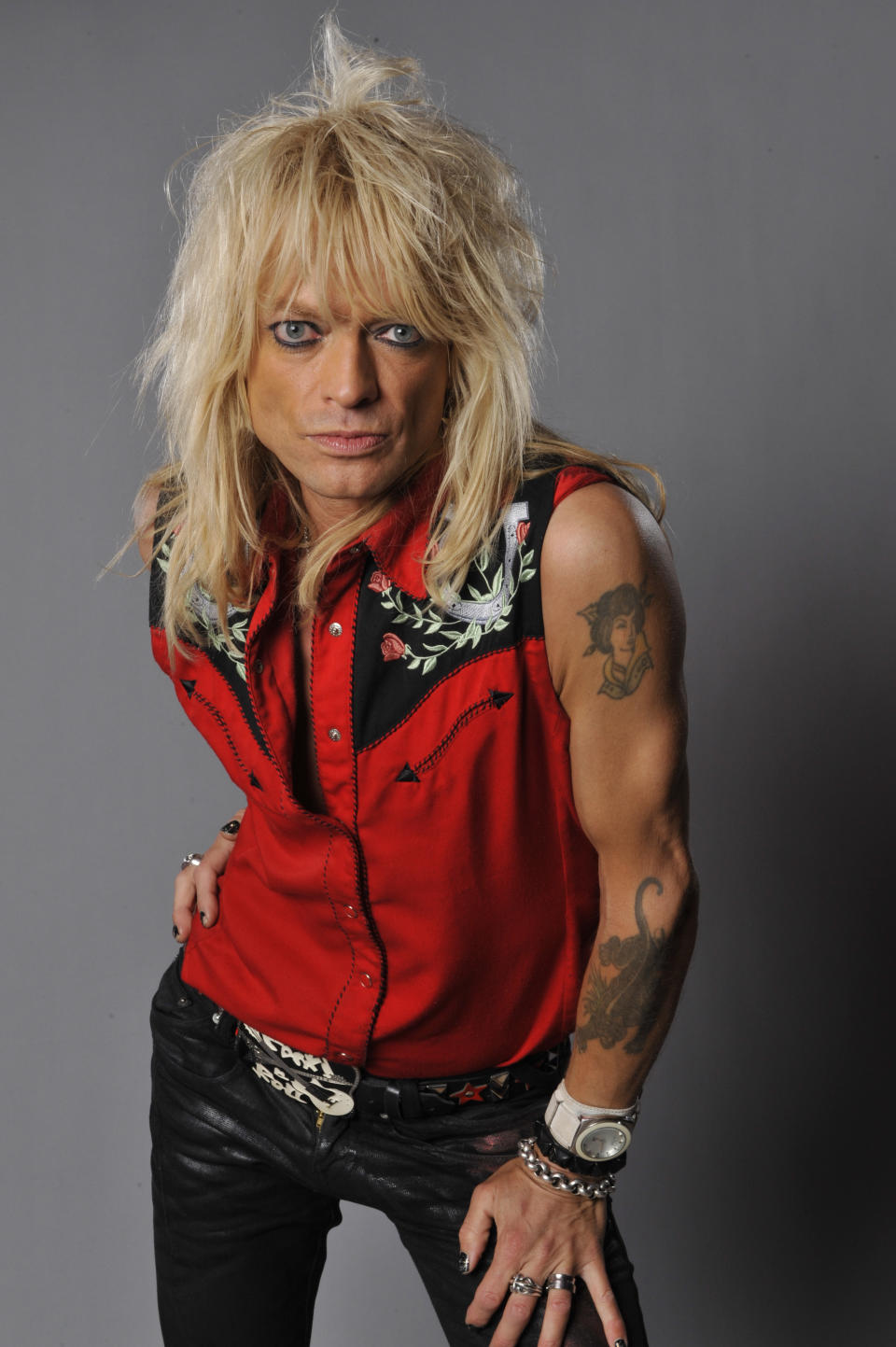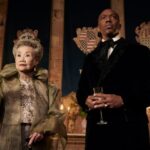“I’ve been through a lot of stuff, yes. Haven’t had the best of luck,” Michael Monroe, the iconic former frontman of seminal Finnish hard rock band Hanoi Rocks, shrugs affably, speaking to Yahoo Entertainment/SiriusXM Volume about his cheekily titled 11th solo album, I Live Too Fast to Die Young. “But things could be worse. I’m still healthy. I’m alive. Every day healthy and above ground is a good day. I love doing music and making a living out of that. I don’t need much to be happier, and money doesn’t get you happiness. I’m able to do this and make relevant records, and this latest record really feels special.”
[embedded content]
It would be understandable, of course, if Monroe was bitter. After Hanoi Rocks made a splash in Helsinki, Stockholm, and then London, releasing four cult-classic glitter-metal albums in Europe, they finally seemed poised for mainstream success in 1984. They had a major-label U.S. deal with CBS Records and a new album, Two Steps From the Move, produced by Bob Ezrin of Lou Reed/Alice Cooper/KISS fame; they were also embarking on their first U.S. tour, opening for Mötley Crüe. But after only two weeks on the road, on Dec. 8, 1984, Hanoi Rocks drummer Razzle went on a beer run with Crüe singer Vince Neil during a party at Neil’s Redondo Beach home.
Neil, whose blood alcohol content was well over the legal limit at 0.17, crashed his car on the way back from the liquor store; two passengers in another automobile involved in the accident were seriously injured, while Razzle was killed instantly. Neil was charged with vehicular manslaughter and received a light sentence of 30 days in jail (he actually served only 19 days) and five years’ probation, and Mötley Crüe went on to even greater fame. (Their next album, Theatre of Pain, was dedicated to Razzle.) But the tragedy spelled the end for Hanoi Rocks, who split up in 1985 after a brief, ill-fated overseas tour with ex-Clash drummer Terry Chimes filling in.
While Monroe stresses that the departure of bassist Sam Yaffa and his own personal differences with guitarists Andy McCoy and Nasty Suicide factored into Hanoi Rocks’ breakup, he explains, “We weren’t strong enough to keep it together. Maybe if we would’ve taken a break for half a year or a year, if we would’ve been in that position, it might have been able to salvage the situation. I mean, the situation was such that we were very likely to become one of the biggest bands in the world and all that. And Bob Ezrin also was looking forward to producing the next album; he felt the same about us as he did about Alice Cooper. We were looking at it as a long haul. But I didn’t want people to get to know Hanoi in the wrong way, because it wasn’t what it was originally. It wouldn’t have been the same. So, what can you do? It was bad luck, but I don’t look back at it like that. I’m just sorry I lost my best friend Razzle. We had a special chemistry.”
Meanwhile, Mötley Crüe wasn’t the only Hanoi-inspired ‘80s rock band that went on to enjoy the sort of success that eluded Hanoi Rocks themselves. While Monroe relocated New York and started from scratch, living on the streets for a few months just as he had in the hardscrabble early Hanoi days, over in in Los Angeles, Hanoi Rocks’ influence was so strong that seemingly every band was citing them in “musicians wanted” Recycler ads. The L.A. Weekly even ran an article in 2017 arguing that “One Band From Finland-Inspired the Entire Sunset Strip Hair Metal Scene,” and in the Hanoi Rocks autobiography All Those Wasted Years, Foo Fighters guitarist Chris Shiflett stated, “The Hollywood scene changed in just one night after people saw the pictures of Hanoi Rocks. After that everyone was wearing the same kind of hair, clothes, and makeup as Monroe.” (Monroe recalls Shiflett’s pre-Foos glam band Lost Kittenz once opening for him in 1989, chuckling, “Even Chris Shiflett had a Michael Monroe hairdo!”)
Monroe, who ironically never lived in L.A. (“I don’t drive,” he laughs), admits that “it was a big surprise to hear that we were so influential on those bands on the West Coast.” Recalling Hanoi Rocks’ Helsinki origins, he says, “We never planned anything. We just wanted to put together the coolest band ever, and we were influenced by everything from funk to reggae to blues. We played anything from punk to calypso. We took influences from everything and just made our own thing. And many of [the Sunset Strip bands] kind of missed the point of what we were doing. They didn’t have that punky kind of attitude. I mean, we started out on the streets and we had a street-gang, us-against-the-world mentality. And it wasn’t about partying and chicks and drugs. … The music was the most important thing. It seemed like a lot of the hair metal bands started playing rock ‘n’ roll for chicks, posing in big hairdos, rather than for the music. I’m a ‘freak’ even in the rock ‘n’ roll world, I guess, because I was never interested in the groupie scene. I could never imagine being with a groupie in my life — or with any stranger, for that matter.”
[embedded content]
[embedded content]
Perhaps Hanoi Rocks were always too freakish to have ever achieved mainstream success, even if tragedy hadn’t derailed them. They were, at the very least, just a bit too ahead of their time. Their mix of Dollsy junkie-rock, Stonsey swagger, skinny-tie new wave, skronky blues, and comic-book metal really sounded like no one or nothing else when they formed in 1980, most likely because Finland offered them few rock role models. The Finnish public certainly hadn’t seen anything like Hanoi before, and the band’s outlandish, leather-lace-and-lipstick image generated much local outrage. Monroe recalls that Helsinki’s skinheads and Teddy Boys — “James Dean kids” who “looked like Richie Cunningham and Fonzie” — would threaten to beat him up on a regular basis. “You had to have a lot of balls to look like I did back like in the day,” he laughs.
The band eventually “crossed over to everybody” when they moved to London (where they met the British-born Razzle) in 1981 and set up a legendary weekly residency at Soho’s Marquee Club. “Everybody came to see Hanoi — punks and hippies, Teddy Boys, even skinheads,” says Monroe. They later also found a huge audience in Japan. But once they signed with CBS in America, Monroe recalls that the record label “didn’t have a clue” what to do with them, and even ordered them to cover Creedence Clearwater Revival’s “Up Around the Bend” for Two Steps because they “didn’t hear a single.”
“One of the best things about Hanoi Rocks was we could not be categorized. We defied all categories. I think labels are unnecessary because they limit your creativity, but the industry, of course, loves to put things in packages of how they’re going market something,” laments Monroe. “The record labels obviously didn’t get Hanoi at the time, and they found all kinds of problems with the marketing. We looked ‘too heavy metal’; we looked too this or too that. But a couple of years later, of course they were looking for lookalike bands after the whole Sunset Strip scene had taken off and a lot of bands influenced by Hanoi became famous and sold millions of records. And then the labels were looking for copycat bands — but they didn’t realize they had the original.”
[embedded content]
One Hanoi-influenced L.A. band that Monroe always admired because “they had their own thing from the beginning” was Guns N’ Roses, and when GNR in fact became the “biggest band in world,” they repaid the debt. GNR reissued Hanoi’s first four European studio albums in the States on their own Uzi Suicide imprint, and when Monroe went solo, Axl Rose appeared in his music video for “Dead, Jail or Rock ‘n’ Roll,” which of course helped get the clip into MTV rotation. Thirty-three years later, Monroe’s new album actually features Slash on the title track. “It’s a really, really sweet, great solo. And he’s a sweet guy. Slash has always be very accommodating whenever I ask for anything,” says Monroe, who just opened for two big Guns N’ Roses shows in London this month.
[embedded content]
[embedded content]
And that brings us to the current day, as Monroe’s influence continues to be felt. He even amusingly recalls a recent metal festival where a member of Slipknot (“the one with the big nose”) ran up to him telling him that Hanoi’s most experimental release, 1983’s Back to Mystery City, was the first album he ever bought. And at age 60, Monroe still looks like the Nordic rock ‘n’ roll angel that was seen pouting on Mystery City’s cover, with his peroxided soap-opera-actress hair, Keane painting eyes, cut-glass cheekbones, and black-lacquered fingernails adorned with silver star decals. He’s lived quite a life, so much so that Hanoi Rocks deserve their own biopic treatment. For the record, he hasn’t seen the Mötley Crüe biopic The Dirt, in which Razzle was portrayed by Max Milner, and he thinks a scripted Hanoi movie would be “cheesy” — but he reveals that a Michael Monroe documentary, aptly titled The Best-Kept Secret in Rock ‘n’ Roll, is in the works and set for a 2023 release. “The director has a good vision. It’s digging more into my personality, and things are coming out that I didn’t even expect,” he teases. “It’s going to be an interesting story for anyone who’s not even interested in rock ‘n’ roll or in me in general.”
For the most part, however, Monroe is not interested in looking backward, or in speculating about what might have been. “I started out with nothing, and I still got most of it left,” he quips. I Live Too Fast to Die Young’s lead single, “Everybody’s Nobody,” is a “tongue-in-cheek tale about letting go of the good old days, or the good old bad days,” he explains. “There’s a lot of artists in my position that seem content to bask in the glory of nostalgia, instead of striving to move forward. Some people are stuck in a certain time period, and they have a big cult following and are heroes at their local bar.
“People ask me, especially now after I just turned 60, ‘What is your highlight of your career?’ And my favorite moment is right now. I think this is the best time of all,” Monroe sums up. “Actually, one of my favorite moments is for my 60th birthday, I was opening for Alice Cooper in Germany, and he invited me up to sing ‘School’s Out’ with him and then had a birthday cake brought up to me. And he sang ‘Happy Birthday’ with the audience to me. That was one of my life highlights, for sure. The best birthday ever.”
[embedded content]
The above interview is taken from Michael Monroe’s appearance on the SiriusXM show “Volume West.” Full audio of that conversation is available on the SiriusXM app.
Read more on Yahoo Entertainment:




